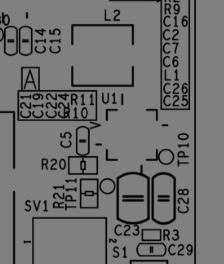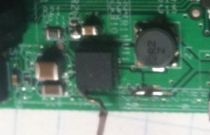Hi everyone, I have a question that has stumped me thus far and I am hoping the forums can help.
Forgive me if this is the improper forum beforehand..
I have designed a fairly simple device using and UC3A3 MCU that is running
in USB Host mode and must provide 5v to a USB memory stick. It is powered by
two AAA cells now, but will likely be using a single Li-Ion Cell with charge management in the future.
I choose the tps2505 for this task because it provides me a the dual boost 3.3V and 5V from Vin < 3V.
I am using basically an identical circuit to the application
example in the 2505 datasheet, using two aaa cells and boosting up to
5V for the USBVBUS on the UC3 (USB1 on the 2505) to power the USB
Stick, as well as providing 3.3V to power the UC3 circuit (LDOOUT
on the 2505).
With some USB sticks, the device works fine, everything is in
order, but when I use other USB sticks (generally older ones), the
tps2505 becomes too hot to touch and burns out.
They are likely drawing more current and the system can't keep up.
I like the simplicity of this circuit so I am trying to figure out what might be the cause of this.
C28 is 10V Ceramic
C27 is 10V ELECT POLY
C5 is 16V X5R 20%
C23 is CER 10V X5R 20%
L1 is 2.2uH C3225X5R1A226M
I am using ~95k resistors on the current limiting portion of the
2505 thinking that ~200mA is enough for one USB stick. I have also set
it up with ~35K resistors (~800mA max) and the 2505 burns out in that
case as well.
I have attached my schematic showing how it is setup, as well as noting the battery supply and 3.3/5V outputs.
If anyone has ANY ideas, please share them...I have been working on
it for a while, but can't figure out what the issue might be.
My next step will be to test for ringing (don't have a scope handy right now), and build a snubber circuit. My board layout is fairly tight, but there may still be some parasitic effects causing this.
What I would like to know is if there is a major flaw in my design, or if I can quickly fix this my modifying the circuit in a simple manner.
I am also open to a completely new design to provide these two sources, but i like the 2505 for its simplicity.
So far I have only been able to get samples though.. does anyone know where I can get the 2505 in more than 5 at a time sample quantities?
Regards & thanks for Reading.
OAC





